The House that William Built
An early colonial home, the country’s finest private museum and a garden of significance attracts visitors to a peaceful inlet in the beautiful North.
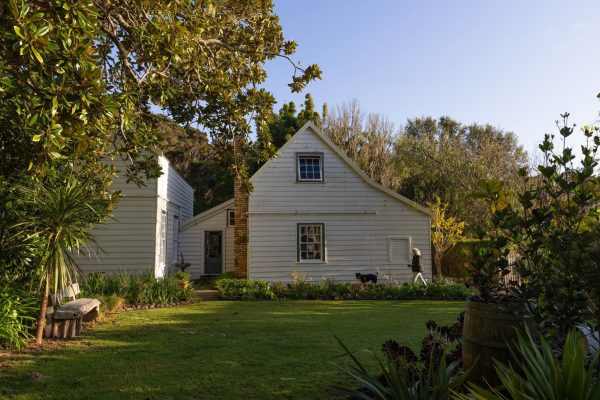
The waves still wash as calmly on the foreshore at Butler Point today as they did in the 1840s, when an English sea captain, whaler and trader named William Butler established a home there for himself and his wife Eliza. The pit-sawn kauri plank cottage had been constructed on a nearby island, Paewhenua, rafted across the inlet near Mangōnui, settled onto puriri trunks and rolled inch by inch up the beach pulled by bullocks. It has remained in this place of residence for nearly two centuries.
William Butler was 14 when he ran off to sea from a tiny Dorset village and within a decade was captaining a whaling brig, the Nimrod, originally British and registered out of Sydney in 1824. Captain Butler visited the whaling grounds of New Zealand in the late 1830s and something about Mangōnui Inlet, at the southern end of what became known as Doubtless Bay, must have appealed. He came ashore on Paewhenua Island, built a house and married a young woman called Eliza Merritt. She was also English-born and living in Adelaide, and her family moved to Kororāreka (Russell) in 1839. It is thought William met Eliza at the signing of the Treaty of Waitangi in 1840 at Waitangi and they were married in April of the same year.
Butler was a busy man; in addition to his business provisioning whale ships from many countries, he became a lay preacher, harbour master and pilot, magistrate, JP and MP, and father to 13 children.
Today’s visitors to Butler Point come not in search of hemp, hatchets and hooch, but to enjoy a large semi-tropical garden following the gentle curve of the foreshore, to learn about New Zealand’s early whaling industry in the extensive museum and to wander through the fully restored colonial cottage in which William and Eliza raised all those children.
In the dark kitchen, with its wood-fired cooking system and heavy iron and wooden utensils, visitors probably thank their lucky stars to have escaped early colonial life. Pause for thought also for the tough life of a whaler; in the museum tour Susan Edwards-Simons, a guide and seventh-generation local, explains that if a harpooned whale dived more than 550 feet it would take the whale boat, harpoonist, oarsmen and all into the depths with it. Hatchets were kept sharp to quickly sever the flying rope if it spooled past the 500-foot marker. By choice, whalers did not learn to swim as they believed drowning was best over quickly.
In the dark kitchen, with its wood-fired cooking system and heavy iron and wooden utensils, visitors probably thank their lucky stars to have escaped early colonial life.
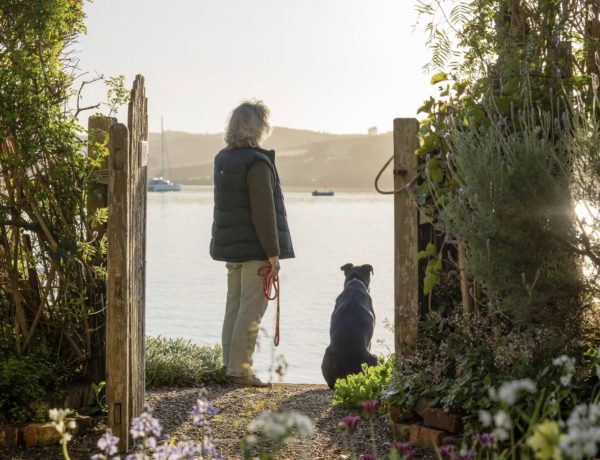
Musing about such risky and uncomfortable lives is possible thanks to the foresight and generosity of a tenacious Auckland couple, the late Lindo and Laetitia Ferguson, who purchased the 24-hectare property in 1970. They’d heard about an old whaling captain’s house for sale on the Northland coast, went investigating, and recognised its historical significance.
The Ferguson family still own and
manage the property today, with their legacy continuing through the hard work of a small team led by daughter Jan Ferguson. Jan has lived permanently at Butler Point since 2000 and wears many hats, all of them busy: from gardener, to tour guide organiser and leader, event manager and maintenance engineer.
As a teenager she and her brother William accompanied their parents during school holidays to stay on the property – a journey significantly more tiresome than today’s easy four-hour run from Auckland.
Initially, the Fergusons established a permanent campsite near the point allowing the then-owners of Butler House to continue to live in it while Lindo and Laetitia planned how to save the historic house and develop the property. They were its fourth owners.
‘The house was in dire and immediate need as it was on the brink of being unsalvageable,’ says Jan. ‘They took professional advice from architect and historian John Stackpoole, and made a considerable financial investment to restore this valuable piece of New Zealand heritage.’
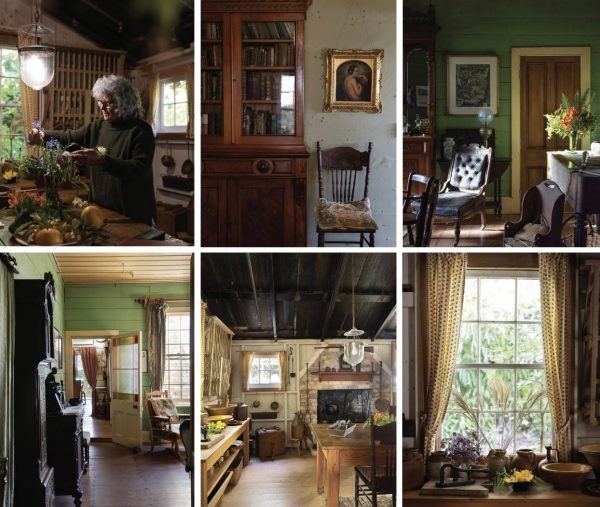
Her parents felt deeply responsible for preserving the house and its history and that foresight is recognised today with it having the highest Heritage New Zealand status of National Significance. ‘They bought the property purely to save and restore it, and open it to the public. My father had incredible foresight. I honestly think from day one, he was planning on collecting whaling artifacts for a museum. Everything in the museum, bar a few donated and loaned items, is the result of his 45 years of avid collecting. All done pre-internet by word of mouth, following up on tips, visiting a great many second-hand shops and chasing things. Dad was a tireless fossicker.’ He also had a busy ophthalmology practice in Auckland.
‘He’d vanish for hours at a time if he was on the trail of a whaling artifact. He found and purchased everything here today.’ And that’s no mean feat as Butler Point Whaling Museum is known as the most extensive private museum in the country and home to many thousands of pertinent whaling history items – from a clinker-built kauri whaleboat to precious ambergris and scrimshaw, from harpoons to whale skeletons.
In addition to the task of preserving the house and establishing the museum, Jan’s mother Laetitia had her eyes set on restoring the gardens from many decades of disarray. Her goal was also to bring beauty and shelter to the bare sheep-grazed paddocks beyond. The sheep were banished and her mother set about planting. Laetitia, nee Bell, grew up on a Central Otago sheep station, and was equally as tireless in the garden as Lindo was in the museum. After the couple built a new home on the property in 1986, Laetitia established a macadamia orchard and once she was spending considerable time there, began keeping a menagerie of animals including kunekune pigs, donkeys, geese, chooks and her dogs.
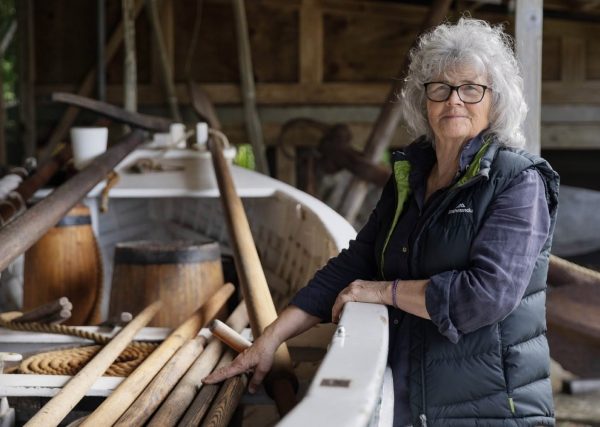
A great deal of her energy went into battling Tecomaria capensis, or cape honeysuckle. Many decades earlier this plant had abandoned any pretense of good garden behaviour and set off, with its pretty orange trumpet flowers aloft, to colonise the entire property. Subduing the powerful plant is a beastly job, says Jan, who maintains an offensive stance on Tecomaria today.
Beyond the overgrown gardens and paddocks were some remnants of native bush in gullies and on hilltops. Several forest giants survived and king of all then and now, is a pōhutukawa with a 12-metre girth and a powerful presence. It is aged in centuries. Equally as interesting, if not perhaps as impressive, is the Magnolia grandiflora planted by Captain Butler which stands very tall today. Butler also planted an olive that was rotting till an arborist, called in by Lindo to tend to the trees, gave it a resuscitating prune and it put out shoots. Along with the pōhutukawa and magnolia, it is on the register of notable New Zealand trees.
Butler Point Whaling Museum is known as the most extensive private museum in the country and home to many thousands of pertinent whaling history items.
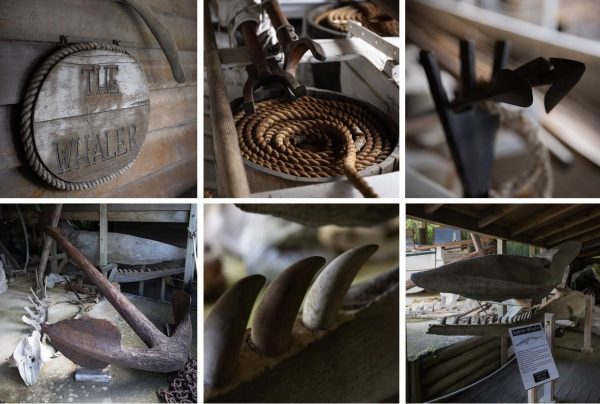
Today, with a high forest canopy underplanted with ferns and exotics vying for space in the leaf-patterned shade and paths following the curve of the bay, the garden is rated by the New Zealand Gardens Trust to be of significance. ‘Without my parents’ foresight half a century ago, none of this would be here now for New Zealanders and international visitors to enjoy,’ says Jan, also noting the preservation role played by the Marchant family, owners before the Fergusons, who refused to sell the house to developers in the 1960s. ‘A couple from the US came to look at purchasing the property and as the Marchants waved them goodbye and the visitors prepared to get in their car, they were overheard to say, “The first thing is to bulldoze that old house.” So that was that, no sale to them.’
Just like her parents before her, Jan is standing guardian of all this precious history. Growing the museum’s collection and keeping the huge gardens in shape is a full life. While she enjoys being in the garden and finds it therapeutic, if she could completely follow her passion, it’d be the museum that would get most of her time. She sees huge potential and many projects to bring into being.
Rather like her parents before her.

